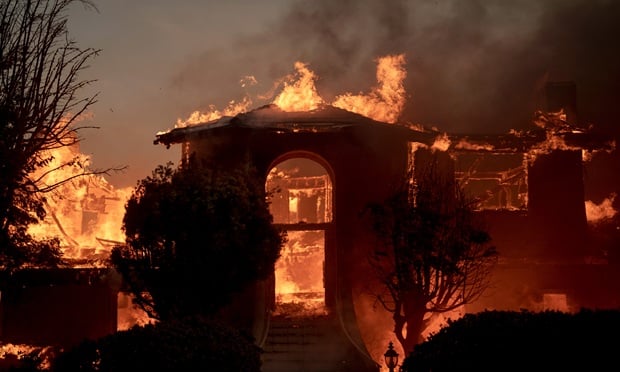Editor's Note: The following article has been provided by Stacey A. Giulianti, Esq., a Florida-licensed attorney and accredited claims adjuster.
Graves open, the dead rise, and corpses begin walking the earth. Hungry for flesh, zombies wreak havoc and destruction in towns and cities all over the United States.
They smash through houses, destroy businesses, and tear up vehicles from coast to coast. Could this become a major problem? You bet. An opportunity for claims adjusters? Bring it on.
While a full treatise on adjusting zombie-damage claims has yet to be published, adjusters should be prepared to handle at least the initial claims resulting from such a disaster. By the way, remember to use your “catastrophe” fee schedule; the carriers would be hard pressed to pay you the lower, “daily” rate, you know, with the dead walking the earth again.
Homeowners' Issues
As the corpses rise from the ground at cemeteries across the land, they will undoubtedly knock over and damage their own grave markers. Adjusting a claim in a graveyard, after the start of a zombie apocalypse, might not seem to be the best decision for an adjuster, but, hey, that's why you get paid the big bucks.
Under the standard homeowners (HO3) policy, loss to Grave Markers is covered if damaged by a “named peril” listed under Coverage C.
Section I: Property Coverages
E. Additional Coverages
12. Grave Markers
We will pay up to $5,000 for grave markers, including mausoleums, on or away from the “residence premises” for loss caused by a Peril Insured Against under Coverage C.
The most likely “named peril” to cover zombie-related damage to a headstone would be “vandalism or malicious mischief,” meaning “willful or wanton destruction of another's property.” An argument could be made that the undead are unable to act “willfully.” However, we expect courts—if any in fact remain—to hold that their actions would at least be “wanton.”
As zombies march across cities, they will inevitably approach homes, looking to make meals of the living. Damage to your policyholders' homes—including broken windows, smashed doors, and cracked walls—will generally find coverage under the standard “all risk” HO3 policy. One exclusion that the intrepid adjuster should review, which would require a denial of such a claim, is if “the dwelling has been vacant for more than 30 days” and the damage is caused by “malicious mischief” from the zombie hordes.
Assuming the homeowners have abandoned their dwellings to seek safer ground (we predict the government will set up Protected Areas), determining those time frames will prove challenging, to say the least. Of course, canvassing the neighborhood for answers might not be the wisest decision.
The “Vermin” Exclusion
An overarching exclusion that some carriers might raise against any damage to residential property is the exclusion for damage caused by “vermin,” defined as “Wild mammals and birds that are believed to be harmful to crops, farm animals, or game, or that carry disease[.]” Because they certainly “carry disease,” it is critical that adjusters consult with experts to determine if the dearly departed are still considered “human” or merely sub-human “mammals.”
Zombies are also expected to destroy personal property during their rampages, especially outdoor furniture and equipment. Coverage C (personal property) items are covered for specifically named perils only, as enumerated on the list below:
- Fire or lightning
- Windstorm or hail
- Explosion
- Riot or Civil commotion
- Aircraft (this peril includes self-propelled missiles and spacecraft.)
- Vehicles
- Smoke
- Vandalism or malicious mischief
- Theft
- Falling objects
- Weight of ice, snow or sleet
- Accidental discharge or overflow of water or steam
- Sudden and accidental tearing apart, cracking, burning or bulging
- Freezing
- Sudden and accidental damage from [an] artificially generated electrical current
- Volcanic Eruption
Zombies might inadvertently cause fires (1), explosions (3), and spikes in electrical current (15), damaging personal items, which would be covered. Direct physical damage caused by the monsters themselves would once again fall under “malicious mischief,” resulting in a covered loss. Unfortunately, your pet dog or cat, if consumed by the ravenous beasts, would be considered a non-covered loss, as noted under “Property Not Covered…b. Animals, birds or fish.”
A potentially thorny issue will arise from Coverage D (loss of use) claims. If the home is unlivable because of damage caused directly by the zombies, compensation will be owed to insureds for their additional living expenses (ALE), including rent for alternate living arrangements. If the house is not damaged by the actions of the dead, but instead stems from restrictions of the government or military prohibiting residents from moving back into the area, then payment would be due for only two (2) weeks.
Coverage D – Loss of Use
Civil Authority Prohibits Use
If a civil authority prohibits you from use of the “residence premises” as a result of direct damage to neighboring premises by a Peril Insured Against, we cover the loss as provided above for no more than two weeks.
This is just enough time, frankly, to get as far away from the other panicked survivors as possible. The last homeowners' insurance issue that is reasonably foreseeable due to the zombie uprising revolves around the liability protections afforded by the HO3 policy. If an insured negligently injures another person, or causes property damage, Section II provides coverage up to the liability insurance limits. Should an infected insured bite another person, and cause them to turn into a zombie as well, the insured would not be covered for contaminating the victim, as noted below:
Section II – Exclusions (Liability)
6. Communicable Disease
“Bodily injury” or “property damage” which arises out of the transmission of a communicable disease by an “insured.”
Of course, a zombie plaintiff would be difficult to imagine, although I expect a flood of advertisements from attorneys (“If you've been bitten…”).
Automobile Issues
Cars will be particularly susceptible to damage from starved flesh-eaters seeking human meals. To find coverage for zombie-related vehicle damage, the policyholder must have the endorsement for “Other than Collision,” as stated in pertinent part below:
Loss caused by the following is considered “other than collision”:
7. Malicious mischief or vandalism
8. Riot or civil commotion
 Coverage would arguably be found for direct damage as per #7 (malicious mischief or vandalism); damage caused by panicked mobs of the living would fall under #8 (riot or civil commotion) as noted on the previous page. Exclusions abound, and the wary adjuster must keep her eyes open (to read the policy, as well as to watch for hungry zombies). Most insurance policies prohibit coverage for damage due to armed conflicts or other martial engagements. The standard automobile policy is no exception:
Coverage would arguably be found for direct damage as per #7 (malicious mischief or vandalism); damage caused by panicked mobs of the living would fall under #8 (riot or civil commotion) as noted on the previous page. Exclusions abound, and the wary adjuster must keep her eyes open (to read the policy, as well as to watch for hungry zombies). Most insurance policies prohibit coverage for damage due to armed conflicts or other martial engagements. The standard automobile policy is no exception:
Exclusions
We will not pay for:
3. Loss due to or as a consequence of:
c. War (declared or undeclared)
e. Insurrection
Should the authorities consider this a “war” against the newly risen, any automobile damage caused by fighting against the zombies might be excluded; similarly if the situation is named an “insurrection.”
Finally, if the vehicle suffers “…destruction … by governmental or civil authorities,” no compensation would be due. It is expected that military or militia will attempt to defeat the undead hordes, and widespread damage cannot be avoided. Adjusters should determine if the damage was caused by individuals or groups protecting themselves (covered), or from police or other governmental actors (excluded).
While not an exhaustive analysis of the potential issues that will arise after the dead arise, it is critical that field adjusters and company examiners review policy language that might apply after the unthinkable occurs. Preparation is the key – along with a solid supply of food, water, and ammunition.
Of course, there is always the possibility of a robot rebellion…
Stacey A. Giulianti, Esq., is a Florida-licensed attorney and accredited claims adjuster who oversees Florida Peninsula Insurance Company's Claims, Legal, and Zombie Mitigation Departments. He may be reached for questions or comments at [email protected] until the Zombie Apocalypse.
Want to continue reading?
Become a Free PropertyCasualty360 Digital Reader
Your access to unlimited PropertyCasualty360 content isn’t changing.
Once you are an ALM digital member, you’ll receive:
- Breaking insurance news and analysis, on-site and via our newsletters and custom alerts
- Weekly Insurance Speak podcast featuring exclusive interviews with industry leaders
- Educational webcasts, white papers, and ebooks from industry thought leaders
- Critical converage of the employee benefits and financial advisory markets on our other ALM sites, BenefitsPRO and ThinkAdvisor
Already have an account? Sign In Now
© 2024 ALM Global, LLC, All Rights Reserved. Request academic re-use from www.copyright.com. All other uses, submit a request to [email protected]. For more information visit Asset & Logo Licensing.








